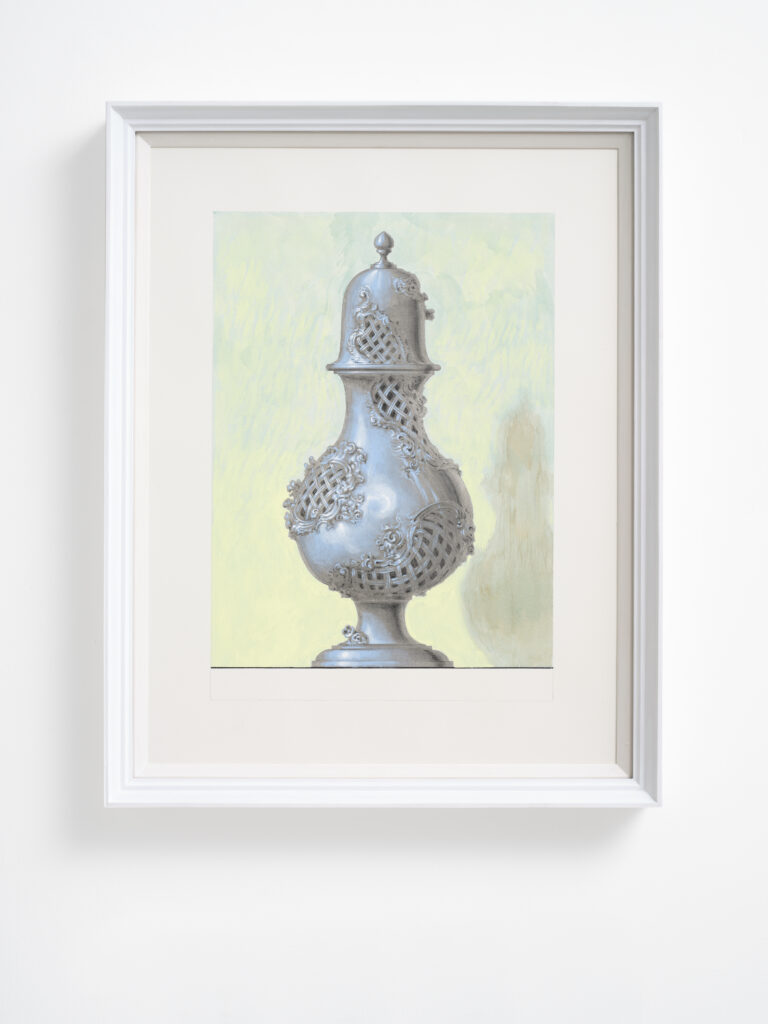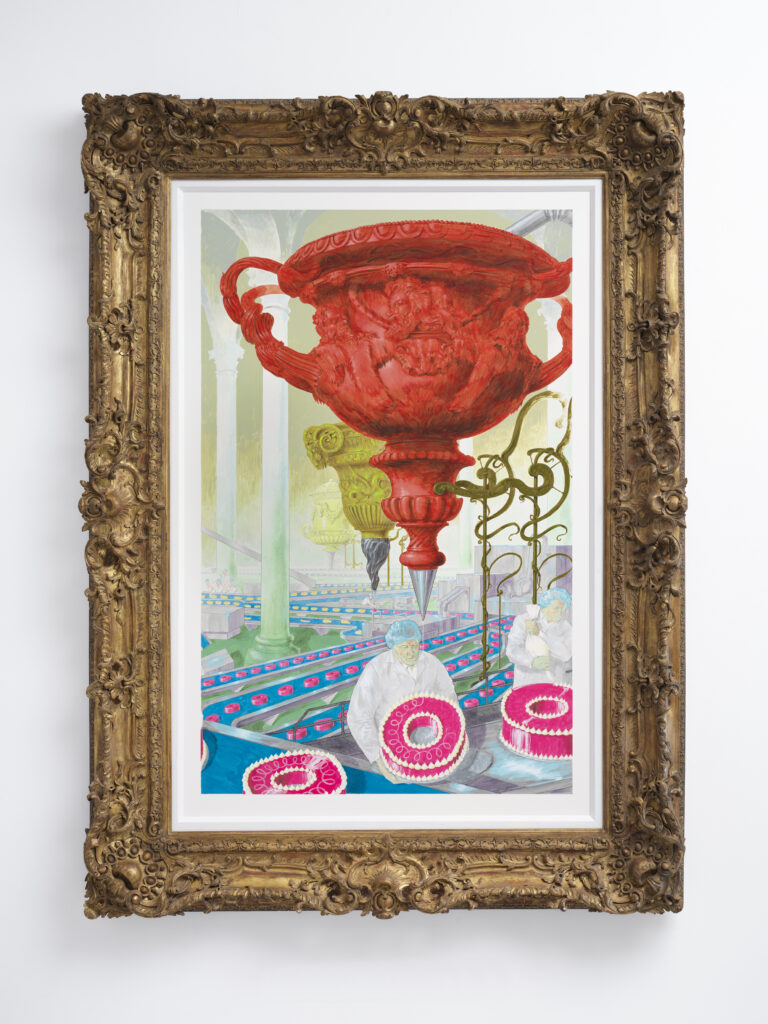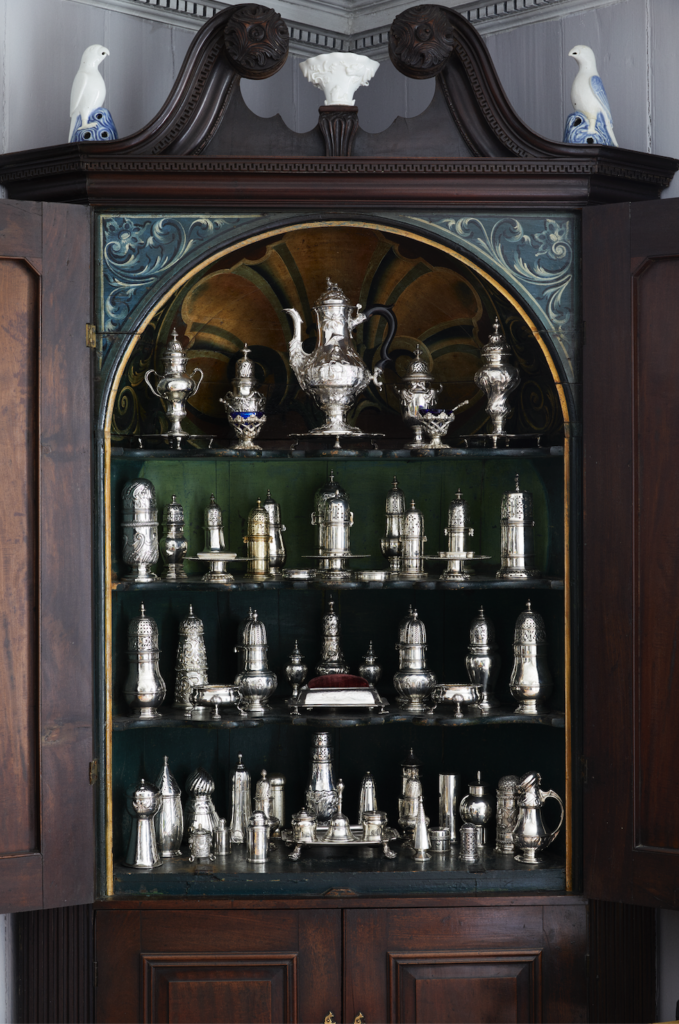Artist Pablo Bronstein on collecting as a form of self-fashioning—baroque, compulsive, occasionally corrosive, but ultimately irresistible.

When I bring an object into my universe, the object is absolutely essential to my existence. I have to have it. It becomes a fundamental brick in my wall, the thing that is missing.
There’s a totally symbiotic relationship between my collecting, how I decorate my home, and my art practice. Collecting, decorating, and making work happen simultaneously. I paint a room a particular color, I collect particular objects and decorative arts, and then it creeps into my work. At the moment, I’m going nuts over William IV furniture. I love all that fat Regency decoration. It’s utterly tasteless; it doesn’t even care about taste. It exists in its majesty. Even if it’s a wine cooler, it has to have lion-paw feet. I’m crazy about that stuff, and now I’m doing some early nineteenth-century–inspired drawings. It always goes back and forth.
I’ve collected all my life. My parents still have bags of Smurf toys that I was obsessed with. I’m a hoarder. I acquire shite. And my partner, Leo, is now the gate-keeper of it. But I began collecting antiques in my teens, starting with antiquarian books, and then in my late twenties and early thirties, I slowly started to buy silver, focusing on sugar casters . . . and then I went a bit nuts. The collection began with an heirloom from my grandmother, one of the very few things that I have from her—an English silver sugar caster that nobody actually knew was a sugar caster. It was in my grandfather’s consulting room in Argentina.

I was given it as a teenager and was always fascinated by it. Then, as I got older, I began to buy silver.
Within a few years, I had amassed a very, very documentary collection of the development of the sugar caster, from Charles I to Charles II, with lots and lots of in-between examples, from the very early proto-sugar casters, where people were just figuring out whether this kind of object worked; through to big seventeenth- and early eighteenth-century examples that really were meant for display, that were just status symbols; through practical middle-class tableware; through elaborate design concepts; and then into the kind of complexities and sophistication of arts and crafts design and modernism; and ultimately to a couple of contemporary pieces.
The thing about silver collecting is, even though it’s not really worth any money—because the truth is that silver has basically crashed, big time—it looks glorious, and there is something about silver that means that it does walk. People do steal it. So you spend the rest of your life ferrying these things from a safe room to the sideboard and back, triple-locking things into cupboards.
So why did I sell it all? Because it was becoming a burden. And there is a difference between enjoying an object and owning it, and I’ve always been very confused about those things. I want to be the kind of person who goes into a museum and looks at a nice object and that’s enough, but I’m not. There is a sort of screwed up psychology here, because the acquisitions are usually at the limit of affordability, the feeling often, “Oh, that’s painful, but I have to have it.” And when that piece comes into my collection, very often it just dies.

It’s a thing. Occasionally, it gets revived in my imagination if I, say, polish the silver. And then it comes alive again for a while. But it will never reclaim that high point it occupied when I didn’t own it. And, actually, a lot of these things weren’t exceptional. They were just part of making an image, an image based a little bit on self-aggrandizement, on creating a perfect interior.
All the sentimental-value objects I kept, including my grandmother’s sugar caster. But many of the things I had most coveted were sold at auction. Leo used to narrate me polishing silver sugar casters and washing them and wrapping them up and putting them in little boxes, as if I were embalming a corpse. But now I truly don’t care about those things. The thing that I regret selling is a drawing about the construction of the theater in Modena, which is just a beautiful little work of art that really does relate to my work in a very deep way. And that’s gone. But then the image is here, and I can always use it again, right?
PABLO BRONSTEIN is a contemporary artist who lives and works in London. He focuses on drawing and performance, with an eye for history and architecture. He has had numerous exhibitions worldwide including solo shows at the Metropolitan Museum of Art and the Museum of Fine Arts, Houston.

